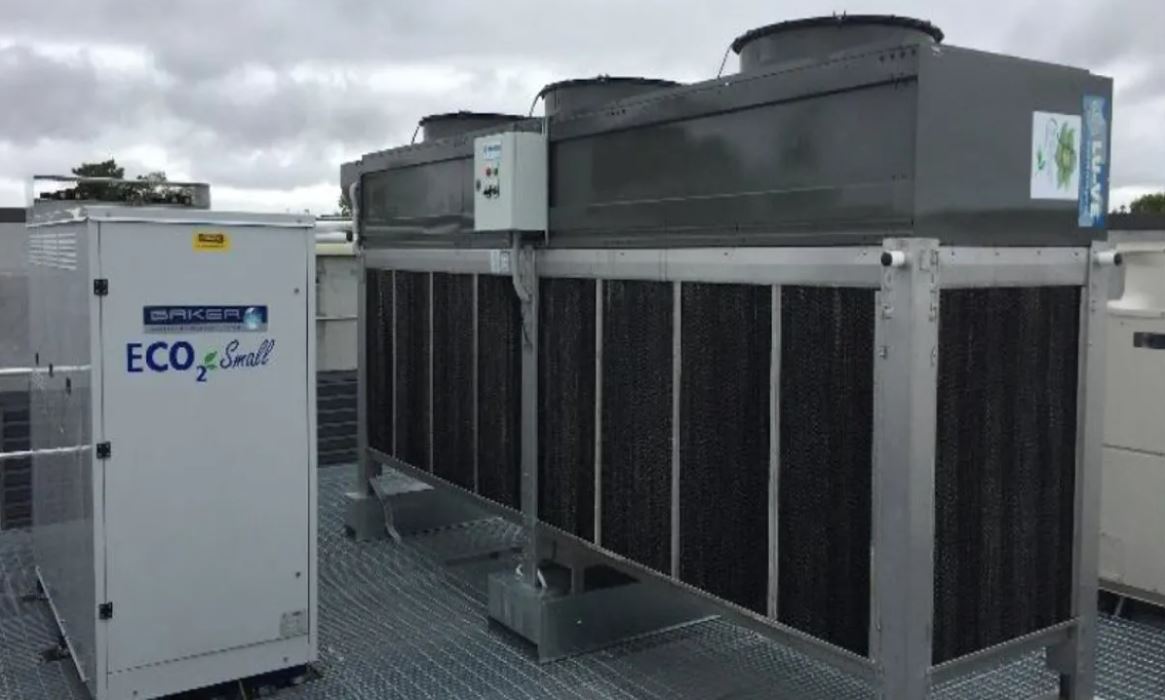Gas cooler control needed for efficient transcritical CO2
October 03, 2022

Controlling the gas cooler outlet temperature (GCOT) in transcritical CO2 (R744) refrigeration systems is “imperative for energy-efficient operation” of the technology in Australia – where ambient temperatures are high – according to Mike Baker, Managing Director of Australian commercial refrigeration contractor AJ Baker & Sons.
With the adoption of methods like adiabatic sprays, parallel compression and closed circuit subcooling, transcritical CO2 systems are proving to be more energy efficient than CO2-cascade and HFC-based systems, he said.
Baker delivered these remarks during his “Transcritical CO2 and the Australian Climate” presentation at the Australian Institute of Refrigeration, Air Conditioning and Heating (AIRAH)’s Refrigeration Conference 2022 in May.
AJ Baker & Sons has been installing transcritical CO2 systems in Australia for nine years, according to Baker.
As of May 2022, the contractor had 55 transcritical CO2 sites across Australia – 18 sites in Victoria, 16 in Western Australia, eight in New South Wales, seven in Queensland and six in Southern Australia. During Baker’s presentation, he also confirmed that an additional six sites are under construction and 12 are in the design phase.
AJ Baker & Sons’ transcritical CO2 installations range from sites with systems that deliver 4kW (1.3TR) low temperature (LT) and 67kW (19.1TR) medium temperature (MT) to systems that deliver 45kW (12.8TR) LT and 202kW (57.4TR) MT.
To combat the high ambient temperatures frequently experienced in Australia, which reduce the efficiency of transcritical CO2 systems, AJ Baker & Sons adopts a range of methods aimed at the GCOT.
At its larger installations, the contractor utilizes methods including evaporative cooling, adiabatic sprays, mechanical subcooling with either propane (R290) or a low-GWP HFC, parallel compression and closed-circuit subcooling.
According to Baker, “each method of GCOT control has a place,” and the methods adopted are dictated by the location’s ambient conditions.
Controlling the GCOT
According to Baker’s analysis, adiabatic sprays – which use water drops to cool the air temperature – is a simple approach that is ideal for low-humidity climates and can reduce the GCOT by 9%. Caution should be used when implemented in hard-water locations. While it is an effective method, Baker does not recommend that end users rely on it alone to maximize system efficiency; instead, it should be used in “conjunction with additional approaches.”
Evaporative precooling is another “simple-yet-effective” method that works well alongside additional technologies, according to Baker. It is ideal for both low-humidity climates and hard-water locations and can reduce the GCOT by 8%. One downside is that maintenance is necessary and is more costly than adiabatic cooling.
Mechanical subcooling entails adding a refrigerated system to the gas cooler outlet. While this simple approach gives excellent control of the GCOT, it requires additional energy usage and can use HFCs – although some of AJ Baker & Sons’ sites are now 100% HFC-free.
Parallel compression works by adding an additional MT compressor to the liquid receiver to allow for more efficient recycling of flash gas. Depending on the GCOT, this method can increase a system’s COP by 16–30%. While more complicated than mechanical subcooling, parallel compression is more impactful, explained Baker
Closed-circuit subcooling is a simple method of controlling the GCOT, reducing energy consumption by 18%, he added.
According to data shared by Baker during his presentation, a transcritical CO2 system with closed-circuit subcooling can reduce flash gas production and use 36% less energy than a transcritical CO2 system with parallel compression. Data also shows that transcritical CO2 with closed-circuit subcooling can outperform a cascade CO2 system by 6%, in terms of energy usage.
“Energy savings are being realized in Australia with transcritical CO2 when comparted to cascade CO2 [and] HFC,” said Baker, adding that financial drivers are needed to support Australia’s transition to natural refrigerant systems.


